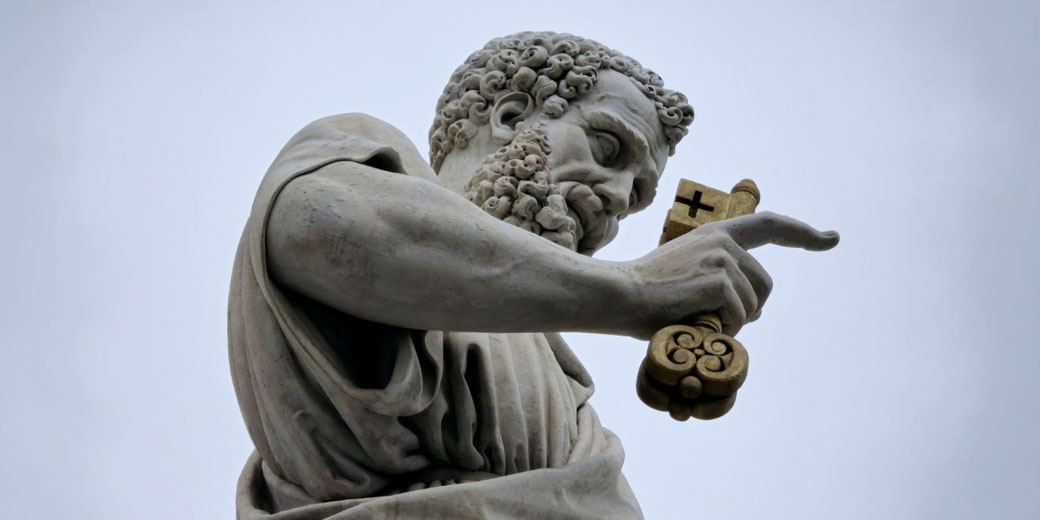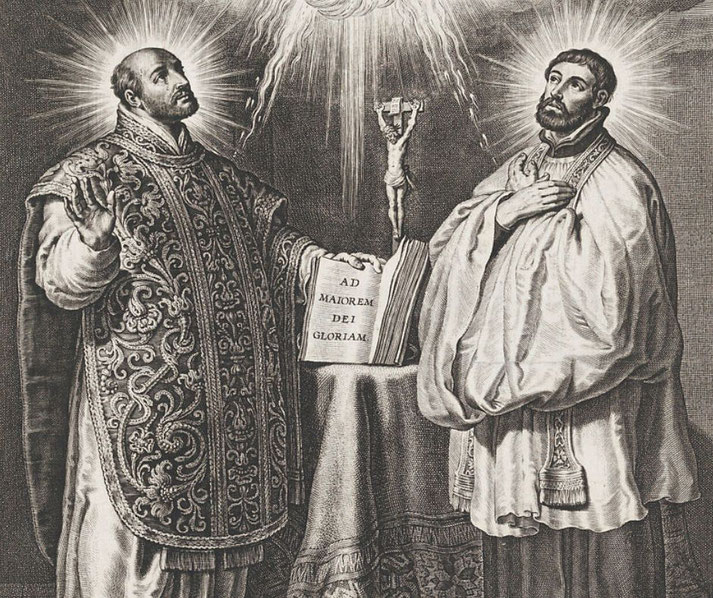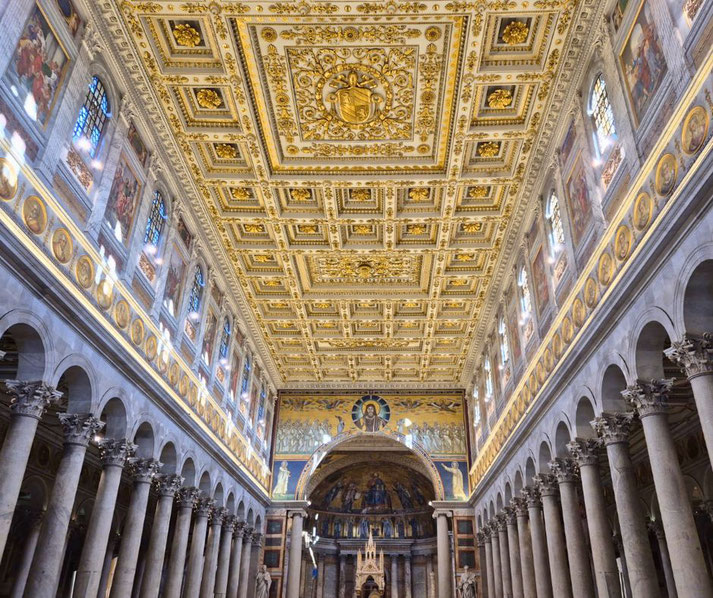How the Catholic Church's Counter-Reformation responded to the Protestant challenge

The 16th century Protestant Reformation sent shockwaves through Christendom and the Catholic Church mounted a dynamic counteroffensive.
This period, known as the Counter-Reformation, was a time of intense self-examination, fervent spiritual renewal, and bold institutional reform.
At the heart of this movement was the Council of Trent, which sought to address the criticisms leveled by the Reformers and to articulate a clear, cohesive doctrine.
The era also witnessed the rise of influential religious orders like the Jesuits, who became the vanguard of Catholic education and missionary work.
Through a blend of art, architecture, and activism, the Counter-Reformation endeavored to reclaim the hearts and minds of believers and to solidify the foundations of the Catholic faith for generations to come.
The Protestant crisis facing the Church
The Protestant Reformation, initiated by Martin Luther's Ninety-Five Theses in 1517, challenged the authority and doctrines of the Roman Catholic Church, leading to widespread religious upheaval across Europe.
Luther's call for reform, which criticized practices such as the sale of indulgences and the corruption within the Church, resonated with many who were disillusioned by what they perceived as the moral and spiritual decay of the institution.
As the movement gained momentum, other reformers like John Calvin and Huldrych Zwingli contributed their own theological perspectives, further fragmenting the Christian faith into various denominations.

The Catholic Church, confronted with the growing threat of Protestantism, realized the urgent need for internal reform and a strong response to the criticisms levied against it.
This period of Catholic revival officially began with the convocation of the Council of Trent in 1545.
How the Council of Trent sought to fix things
The Council of Trent, convened in the small city of Trento in northern Italy, was one of the Catholic Church's most important ecumenical councils.
Spanning over 18 years, from 1545 to 1563, with intermittent sessions, the council was a cornerstone of the Counter-Reformation.
One of the council's primary objectives was to clarify and reaffirm the key tenets of Catholic faith in response to Protestant critiques.
It upheld the authority of the Pope and the Church's tradition alongside the Scriptures, a direct counter to the sola scriptura principle advocated by many Reformers.
The council also reaffirmed the seven sacraments, the doctrine of transubstantiation in the Eucharist, and the necessity of both faith and good works for salvation.
In addition to theological matters, the Council of Trent initiated a series of reforms aimed at addressing the moral and administrative issues within the Church.
It mandated the establishment of seminaries for the proper training of priests, a move that aimed to enhance the clergy's spiritual and intellectual formation.
The council also addressed the need for a more disciplined and moral lifestyle among the clergy, condemning simony and nepotism, and enforcing celibacy.
The council's decrees on liturgy led to the standardization of the Mass and the creation of the Roman Missal, which remained largely unchanged until the Second Vatican Council in the 20th century.
This uniformity in liturgical practices helped to foster a sense of unity and identity within the Catholic Church.

The explosion of new religious orders
The Counter-Reformation saw the emergence and revitalization of religious orders that played a crucial role in the Catholic Church's efforts to renew its spiritual vigor and expand its influence.
Among these, the Society of Jesus, or the Jesuits, founded by Ignatius of Loyola in 1540, stood out for their commitment to education, missionary work, and the defense of the Catholic faith.
The Jesuits established schools and colleges across Europe, providing a rigorous education that combined religious instruction with humanistic studies.
Their educational institutions became centers of intellectual and spiritual formation, attracting students from various social backgrounds and contributing to the spread of Catholicism.
In addition to their educational endeavors, the Jesuits were also active missionaries, venturing into Asia, Africa, and the Americas.
They adapted to local cultures and languages, seeking to convert indigenous peoples to Christianity while respecting their customs and traditions.
The Jesuits' missionary efforts not only expanded the geographical reach of the Catholic Church but also brought new knowledge and understanding of distant lands and cultures back to Europe.

Other religious orders also played significant roles during the Counter-Reformation.
The Capuchins, a reform branch of the Franciscans, focused on preaching and ministering to the poor, embodying the ideals of simplicity and poverty.
The Discalced Carmelites, reformed by figures like Teresa of Ávila and John of the Cross, emphasized contemplative prayer and mysticism, contributing to the spiritual renewal within the Church.
How art was used to encourage reform
The Counter-Reformation had a profound impact on art and architecture, giving rise to the Baroque style, which became a powerful tool for religious expression and persuasion.
Baroque art and architecture were characterized by their emotional intensity, dynamic movement, and dramatic use of light and shadow.
These elements were employed to captivate the viewer, evoke spiritual awe, and convey the majesty and power of the Catholic Church.
In painting, artists like Caravaggio, Peter Paul Rubens, and Guido Reni used realistic depictions, vivid contrasts of light and dark, and dramatic compositions to bring biblical stories and saints' lives to life.
Their works were designed to inspire devotion and reinforce Catholic teachings, serving as visual sermons that communicated the Church's messages in a direct and compelling manner.
Baroque architecture, exemplified by the works of architects like Gian Lorenzo Bernini and Francesco Borromini, was marked by grandiose structures, ornate decorations, and a sense of movement and theatricality.
Churches and cathedrals were designed with sweeping facades, elaborate altarpieces, and intricate stuccowork, creating a sense of awe and wonder that aimed to draw the faithful closer to the divine.
One of the most iconic examples of Baroque architecture is St Peter's Basilica in Rome, with its magnificent dome and expansive colonnades.
Bernini's design for the square and his Baldacchino inside the basilica epitomize the Baroque style's ability to convey the Church's power and glory.
The use of art and architecture during the Counter-Reformation was not just about aesthetic beauty; it was a strategic response to the Reformation's challenge.
By engaging the senses and emotions, the Church sought to reaffirm its authority and attract believers back to the fold.

Did the Counter-Reformation work?
Politically, the Counter-Reformation had a stabilizing effect in some regions, as the Catholic Church sought to reaffirm its authority and align with ruling powers to counter the spread of Protestantism.
In countries like Spain and Italy, the close relationship between the Church and the state reinforced the power of the monarchy and the influence of Catholicism in public life.
However, in other parts of Europe, such as the Holy Roman Empire, religious tensions exacerbated by the Counter-Reformation contributed to conflicts like the Thirty Years' War (1618-1648), which had devastating effects on society.
The Counter-Reformation also had a social impact through its missionary activities, which led to the spread of Christianity and the establishment of Catholic communities in various parts of the world.
In the Americas, Africa, and Asia, missionaries not only preached the Gospel but also provided education and healthcare, contributing to the social development of these regions.
Further reading
What do you need help with?
Download ready-to-use digital learning resources
Copyright © History Skills 2014-2025.
Contact via email
With the exception of links to external sites, some historical sources and extracts from specific publications, all content on this website is copyrighted by History Skills. This content may not be copied, republished or redistributed without written permission from the website creator. Please use the Contact page to obtain relevant permission.





